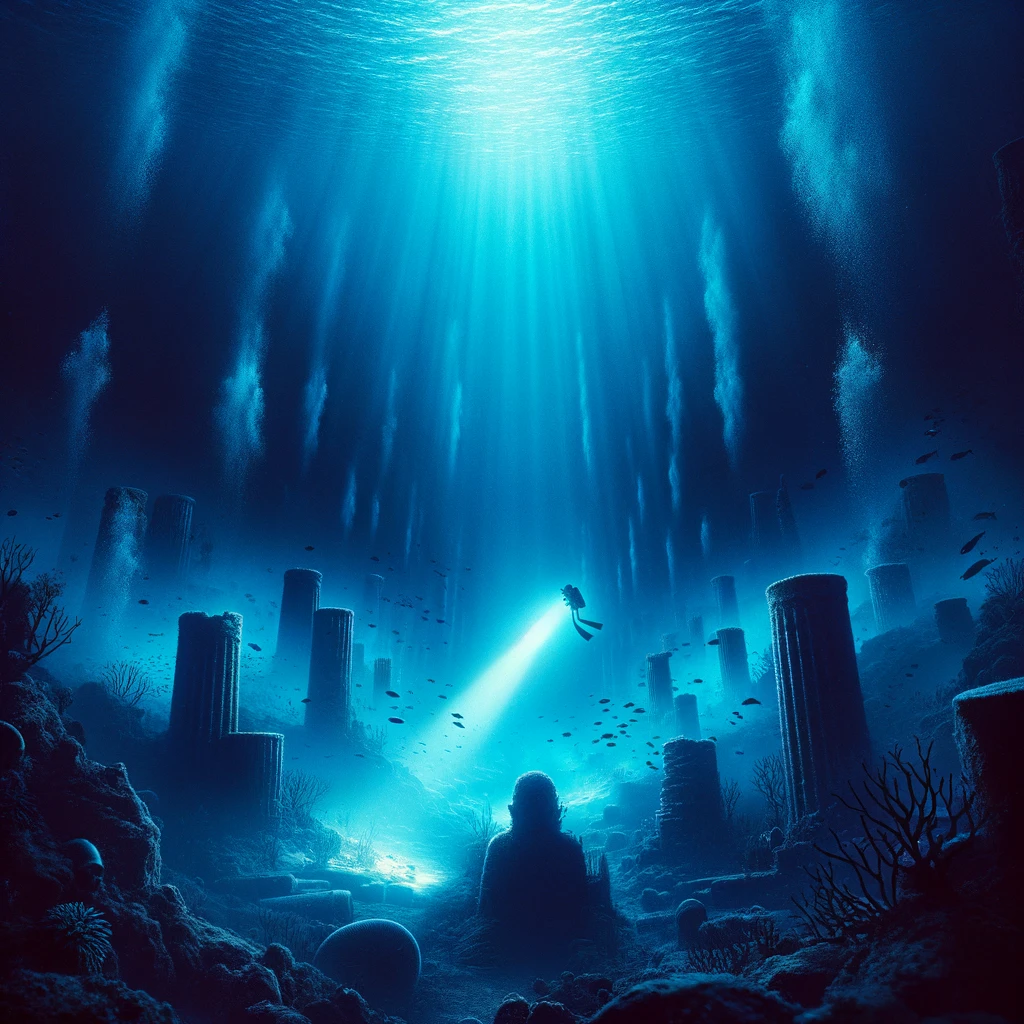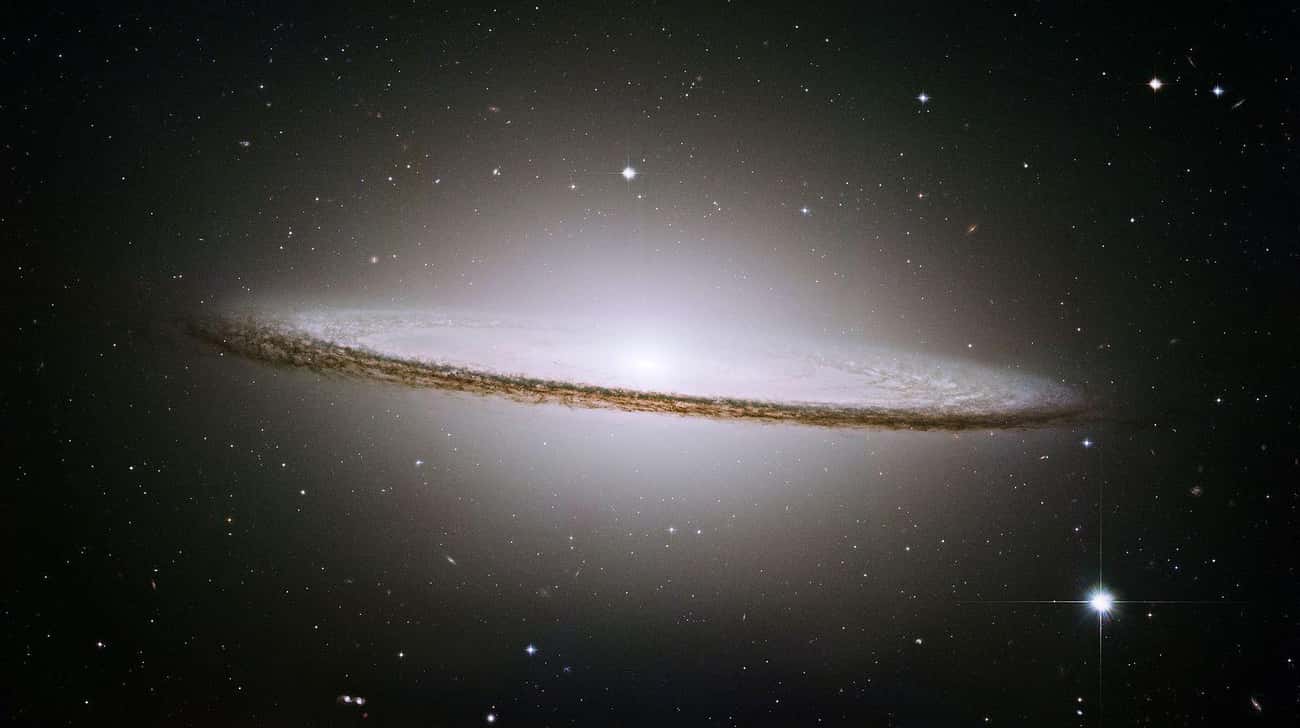15 Unexplained Ocean Mysteries That Will Amaze You
The ocean is vast and full of mysteries that have fascinated people for a long time. Some of these mysteries are so puzzling that we can’t fully understand them. They make us curious and push us to explore more. Imagine going on a journey into the ocean’s unknown secrets, where we uncover ten mysterious and amazing things hidden beneath the waves.
We’ll explore strange places like the Bermuda Triangle and mysterious sounds deep in the ocean. Each discovery makes us think about what’s going on under the sea. Come with us as we investigate the unknown parts of the ocean, discovering things like submarines lost in 1968, ancient stories about Atlantis, and even huge squids that live in the deepest parts of the ocean.

We’ll also dive into the world of the Megalodon, an enormous shark that once ruled the seas, and check out a strange object in the Baltic Sea that researchers can’t figure out. We’ll visit ruins at the bottom of the Aegean Sea and think about the most dangerous creatures in the ocean – from scary fish to mysterious and frightening sea animals.
Are you excited to explore these ocean mysteries with us? Join our adventure into the deep sea, where each new discovery makes us wonder about the hidden wonders beneath the waves. 🌊 #OceanMysteries #ExploreTheUnknown #DeepOceanWonders
The Mysterious Mariana Trench

The Mariana Trench holds the record as the deepest spot in the world’s oceans, reaching a staggering The Mariana Trench is known as the deepest place on Earth, plunging to an astonishing depth of 36,201 feet. To give you a sense of its enormity, you could fully submerge Mount Everest, and there would still be an additional 7,000 feet of water above it. Only four expeditions have successfully explored this deep-sea trench, given its vast size and intense pressure. The mysteries hidden within its extensive expanse remain mostly unknown – it’s a mysterious realm with much yet to be discovered!
In this mysterious underwater world, strange and weird animals, sea creatures, and even prehistoric animals inhabit the depths. From sharks to sea monsters, the Mariana Trench is home to a variety of both scary and creepy creatures, acting as a haven for predators in the deepest waters. Scientists have revealed some facts about the Mariana Trench, shedding light on its truth and dispelling some of the mystery that surrounds it. As we explore the bottom of the ocean, we encounter marine creatures and deep-sea life that add to the overall mystery of this incredible trench. Join us in uncovering the secrets of the Mariana Trench and delving into the fascinating facts about Earth’s deepest underwater realm. 🌊 #MarianaTrenchMystery #DeepSeaExploration #OceanWonders
The Bermuda Triangle

The mystery of the Bermuda Triangle, also known as the Devil’s Sea, centers around a triangular stretch of approximately 500,000 square miles in the ocean, bordered by Miami, Bermuda, and Puerto Rico. It remains one of the world’s most enigmatic maritime puzzles. During Christopher Columbus’s initial journey through this area, he reported witnessing a massive luminous sphere in the sky, descending toward the horizon and casting an eerie glow. Following this, a series of peculiar incidents occurred, ranging from unexplained boat disappearances without distress signals to the mysterious vanishing of an entire squadron of US torpedo bombers in 1945.
The Bermuda Triangle has intrigued people for years, leading to various theories and discussions about its mysteries. From ship sinkings to plane crashes, like the unfortunate incident involving the El Faro ship, the region has seen its share of strange occurrences. Air bombs and unexplained phenomena contribute to the many theories attempting to explain the peculiar happenings within the Bermuda Triangle. Join us in exploring the facts and theories surrounding this mysterious area that has puzzled the world for so long. 🌊 #BermudaTriangleMystery #DevilsSea #WorldMysteries
The Bloop

The Bloop is a strange and unknown sound underwater that scientists heard in 1997 using special microphones called hydrophones. These devices are used to listen to sounds in the sea, like earthquakes and volcanoes. The Bloop was super loud and came from a faraway place in the South Pacific Ocean, near the bottom of South America.
Because of how the Bloop sounded, with its pitch and loudness, people came up with different ideas about what made it. Some thought it might be a huge, unknown sea creature, like a Kraken or giant squid.
But in 2005, scientists figured out that the Bloop was probably just the sound of ice cracking and breaking off from icebergs near Antarctica. The frequency and volume of the noise matched the way ice sounds in the ocean. This explanation showed that the Bloop wasn’t caused by a mysterious sea creature but by natural events.
Now, we know the Bloop isn’t a strange mystery anymore. It’s a good example of how scientists can be puzzled at first, but with more research, they can find a sensible answer to the puzzle.
you may also likeThe Megalodon

The Megalodon, a colossal shark that existed around 23 to 3.6 million years ago, stands out as one of the largest and most formidable ocean predators in history. Named for its massive teeth, some reaching up to 7 inches (18 centimeters) in length, the Megalodon’s size remains a subject of estimation, possibly reaching lengths of 82 feet (25 meters) or more. As an apex predator, the Megalodon feasted on large marine mammals like whales and seals, its teeth specially adapted for tearing into the flesh of its prey. Inhabiting oceans worldwide, particularly favoring warmer coastal waters, Megalodon fossils have been discovered on every continent except Antarctica.
Despite its dominance, the Megalodon met its mysterious end around 3.6 million years ago, and the exact cause of its extinction remains uncertain. Theories propose factors such as climate changes, competition with other predators, and shifts in prey availability as potential contributors. Fossilized teeth and a few vertebrae constitute the primary evidence of Megalodons, with the rarity of fossilized cartilage making it challenging to reconstruct their complete skeletons.
Even though the Megalodon vanished millions of years ago, it continues to captivate the public imagination, fueling myths and speculative theories about its potential survival in the deep sea. However, no scientific evidence supports the idea that Megalodons still exist today.
The Lost City of Atlantis

The Lost City of Atlantis is a famous ancient city that people believe existed a very long time ago. The idea of Atlantis comes from the writings of an ancient Greek philosopher named Plato. According to Plato, Atlantis was a big island in the Atlantic Ocean, and its capital city was advanced and powerful.
The legendary Lost City of Atlantis, believed to be in the Atlantic Ocean, was described by Plato as an advanced city with concentric rings, a palace, and a temple to Poseidon. Though Plato portrayed Atlantis as a powerful and smart civilization, it supposedly sank about 9,000 years ago due to moral decline. However, there’s no solid proof of Atlantis, leaving its existence a mystery.
While many find the story interesting, some think it might be more of a made-up tale than a real city. People have looked for Atlantis for a long time, but there is no solid evidence it ever existed. The mystery of Atlantis continues to capture people’s imaginations, and there are different ideas about where it might have been, but the truth remains unknown.
The Lost Submarines of 1968

Life on a submarine is tough because you’re stuck in a long metal tube deep under the ocean. When things go wrong, they can go really wrong. In 1968, something unusual happened – four submarines from different countries (the United States, Israel, France, and the Soviet Union) all went missing in the same year. This made 1968 the deadliest year for submarines since World War II, with 318 people losing their lives. The USS Scorpion, INS Dakar, Minerve, and K-129 disappeared mysteriously, and people still wonder about what happened to them.
Colossal Squid

This scary deep-sea creature was first discovered in 1925, and it kind of supports the stories about sea monsters. Colossal squids are hard to find, so we don’t know much about them, but from the beaks that have been found, scientists guess that when they’re fully grown, they could weigh up to 1,500 lbs and be 30 to 33 feet long. Only a few of them have been seen because they usually live in the Antarctic Ocean and go really deep, like 7,200 feet down. Besides being huge, colossal squids have swiveling and three-pointed hooks on their limbs, making them even scarier.
Adam’s Bridge

Rama Setu, also called Adam’s Bridge, is a chain of limestone shoals that roughly connects the northwest coast of Sri Lanka to Pamban Island, which is 30 miles away. The history of Rama Setu is linked to a local legend. According to Hindu mythology, it was constructed by an army of warrior monkeys called “Vanara” to assist the god Rama in rescuing his wife Sita from the Demon king Ravana. While many consider this origin story a myth rather than a fact, some argue that Adam’s Bridge was indeed built and was not a naturally occurring land bridge. What is certain is that, in the 15th century, it was completely above sea level and could be crossed.
A Deadly Undersea Lake

We usually think all water in one place is the same, but things like temperature and salt levels can make different sections, like lakes in the ocean! Scientists found a special underwater lake at the bottom of the Gulf of Mexico, 3,300 feet below the ocean surface. It’s small, just 12 feet deep and about 32 feet wide, but it’s powerful. They call it the “Jacuzzi of Despair” because it’s so salty and has harmful stuff like methane and hydrogen sulfide that can kill sea creatures. We don’t know much about this strange underwater place, but scientists believe studying it might help us understand what conditions are like on other planets.
Macropinna Microstoma

Ever heard of a fish with a strange name? Well, wait until you see the fish it belongs to! This odd-looking creature was first found in 1939, but we didn’t get a live photo of it until 2004. It lives really deep in the ocean, between 2,000 and 2,800 feet down. People have caught it a few times, but its delicate body makes it hard to study. This fish is part of the “barreleye” family and is called Macropinna microstoma. It has a see-through head and special tube-shaped eyes that help it see in the dark ocean. Its head is like a dome, letting it look not just forward but also upward through its own head. It’s unique, for sure, but it also looks pretty creepy!
The vanishing island of Bermeja

Off the coast of the Yucatan peninsula, there used to be a very small island called Bermeja. But guess what? It’s not there anymore. A long time ago, people used to put it on maps, but as time passed, especially in the 18th Century, it slowly disappeared from maps. The last time it was confirmed on a map was in 1921. Mexico really wants to find out what happened to their little island. In 2009, they tried three times to locate it using fancy technology, but no luck.
Now, there are two main ideas about why Bermeja vanished. One is that it sank because of rising sea levels or some natural disaster. The other is a bit wilder – some people think the CIA blew it up because there was oil in that area, and they wanted to make sure the U.S. could claim it. But wait, there’s a third, even weirder possibility: Maybe Bermeja was never real. Some early explorers drew maps with mistakes on purpose so their rivals couldn’t trust them. Bermeja might be one of those made-up things that everyone believed for a while but then forgot about when accurate maps came along. Mexico insists that Bermeja was real but not in the place the maps show. So, we’re still not sure if Bermeja was a “phantom island” or not.
The immortal jellyfish

What’s the sea’s most mysterious creature? Many might think it’s the giant squid or some mythical sea monsters. But here’s a small jellyfish, Turritopsis dohrnii, that puts them all to shame with its nickname: The immortal jellyfish.
This jellyfish is as impressive as it sounds – it can live forever. Turritopsis dohrnii can switch between two stages, called polyp and medusa. When it’s injured or seems to reach the end of its life, it simply transforms its old and damaged cells into young, healthy ones and keeps going. It’s like having Wolverine’s healing powers and Benjamin Button’s ability to reverse age, but this jellyfish can do it whenever it wants.
This incredible ability to reset itself and start fresh whenever it faces death makes Turritopsis dohrnii one of the most amazing creatures in the sea. If science could figure out how to use its powers, well, imagine how much we could save on hospital bills!
Bimini Road

The Bimini Road is a submerged rock formation near North Bimini in the Bahamas. Discovered in 1968, it consists of rectangular limestone blocks, leading some to speculate it’s a man-made structure, possibly from the lost city of Atlantis. However, most scientists believe it’s a natural formation called beachrock, formed by cemented beach sand. The debate continues, but mainstream archaeology leans towards the Bimini Road being a product of geological processes rather than ancient human construction.
Yonaguni Monument

Unearthed in 1985, these colossal, stair-like structures have remained a subject of controversy. While some assert that they are remnants of an ancient civilization’s construction, others argue that they are simply uncommon natural formations. These massive stone formations measure more than 165 feet in length and 65 feet in width. One thing is for sure— We definitely don’t want to meet the thing that is large enough to use those steps.
The Kracken

Imagine a school bus, and now picture a squid of the same colossal size. Not the most pleasant mental image, right? Well, back in 1870, a gigantic squid washed ashore in New Zealand, prompting local villagers to claim it was the very creature responsible for grabbing and sinking a canoe earlier. The squid’s mantle, the cone-shaped structure at the top of its head, measured over 9 feet in length. A contemporary scientist has deduced from this finding that giant squids might have reached lengths ranging from 19 to 90 feet. While acknowledging the upper limit may be a bit ambitious, he confidently suggests that squids measuring a substantial 66 feet are within the realm of possibility.























